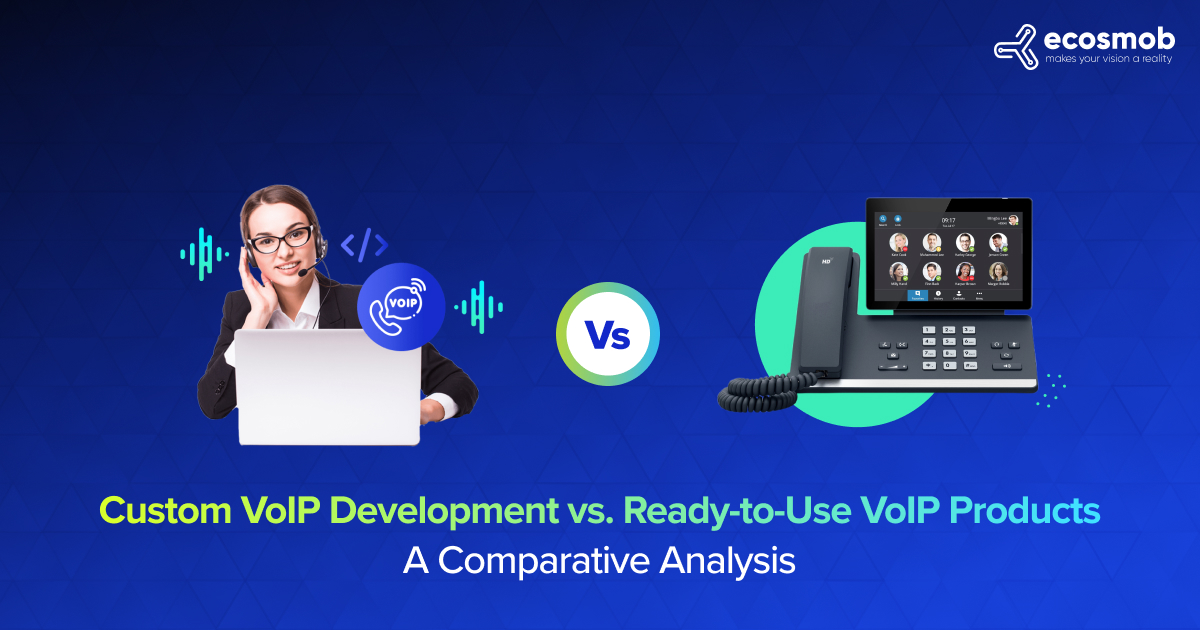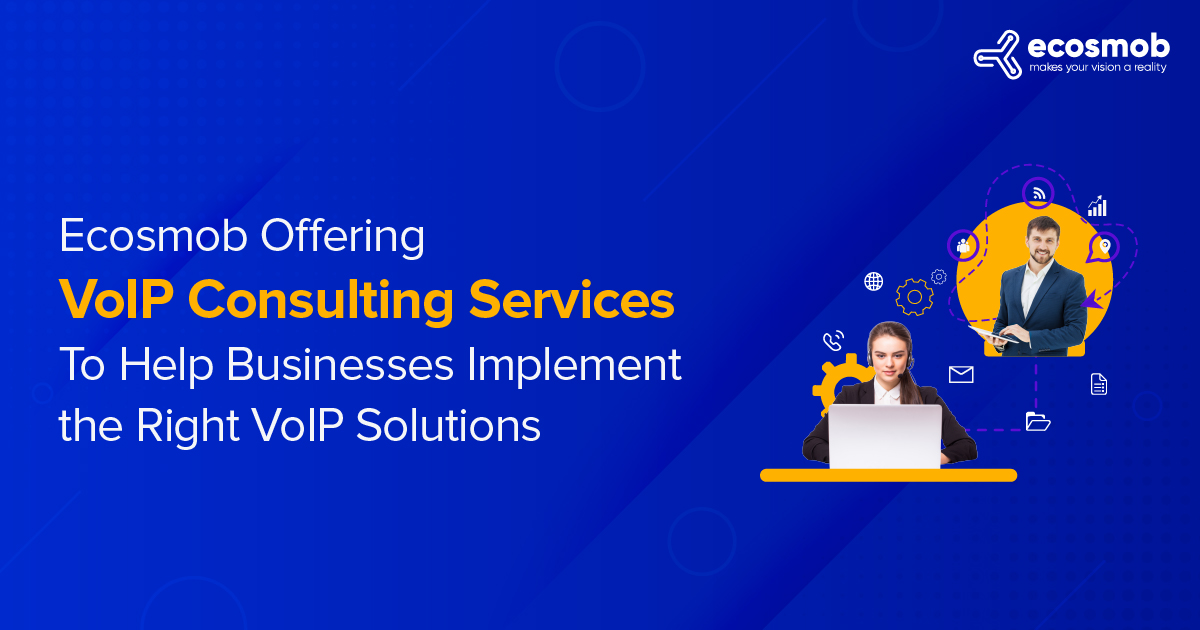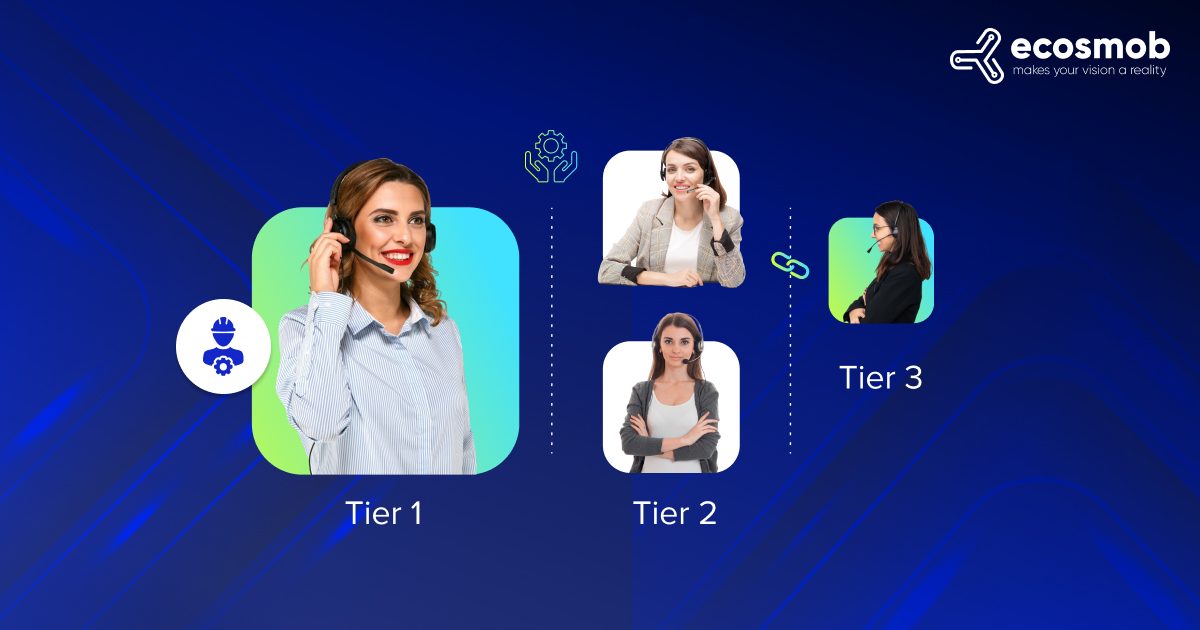QUICK SUMMARY
IT support is tiered for efficiency. Tier 1 handles fundamental issues, Tier 2 solves technical problems, and Tier 3 tackles complex challenges. Let’s break it down!
IT support, a technical help desk or support desk, is a service businesses offer for IT product customers. The support varies with complexity, hence the division into different service levels or tiers. Companies provide technical support teams for various devices and software, including televisions, phones, and motorized products, and assist through chats, email, texting, video, chatbots, and other mediums. Services are divided into Tiers or Levels to better serve the customers or users. As a result, a standard support structure revolves around a three-layered system—Tier 1 technical support or Level 1 support, followed by Tier 2 and Tier 3 technical support.
You can choose a tier 1 experience support engineer for your technology-related issues. However, if they cannot identify and fix the problem, the ticket is assigned to L2 and L3. So, in that case, you need to contact L2/L3 customer support engineers according to your requirements and resources.
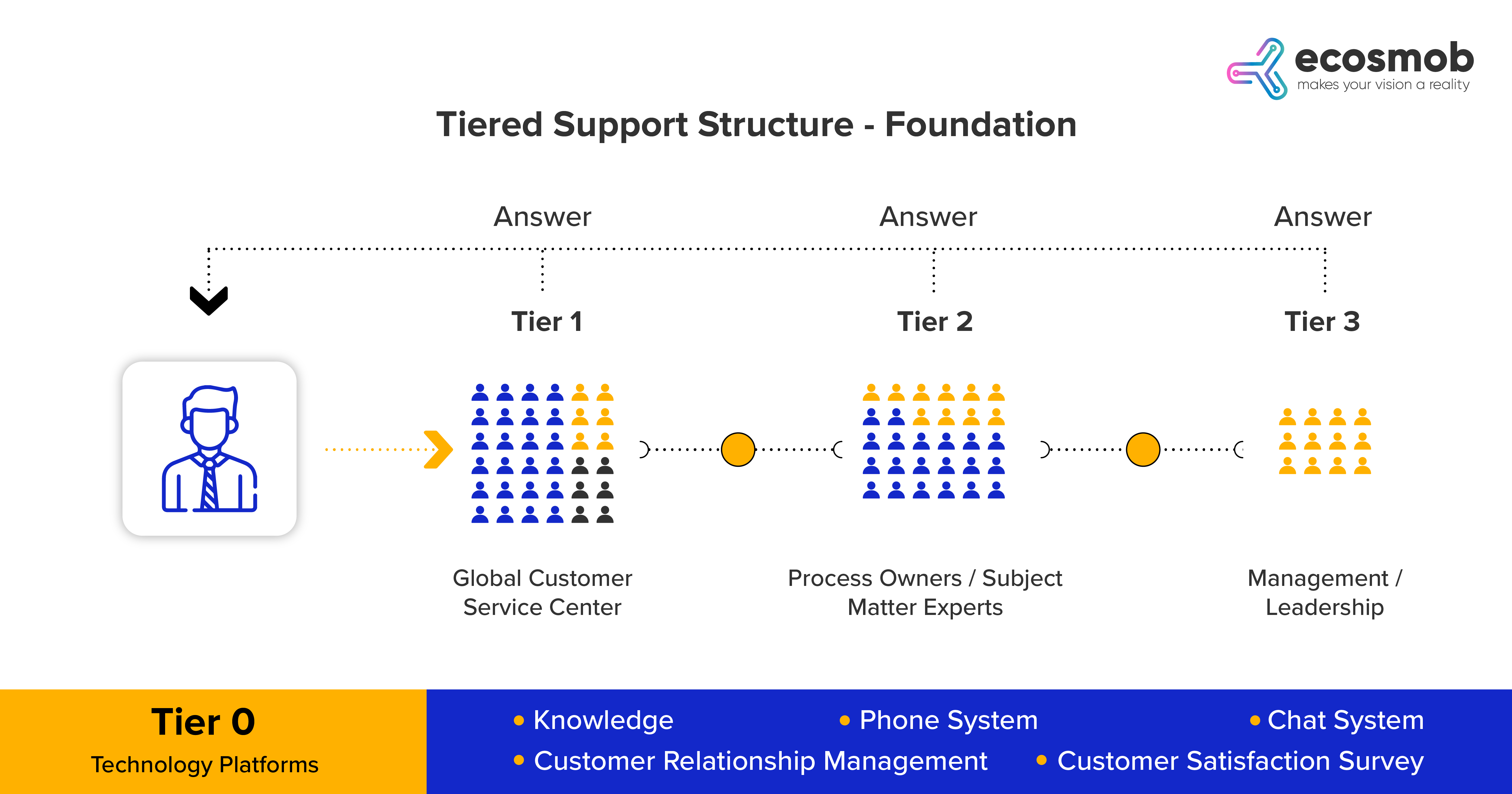
What is Tier 1 Tech Support (Level 1)?
Tier 1 support is essential for addressing initial client issues and creating a smooth escalation process for more complex problems requiring advanced expertise. It’s the first step in ensuring a seamless IT support experience. Support is typically provided through:
- Phone
- Chat
Key Features of Tier 1 Support
- Focus on common IT issues and basic service requests.
- Use of scripts and predefined solutions to resolve problems.
- Includes assistance with:
- Utilization issues
- Help desk requests requiring IT participation
When to Escalate Issues
- If the issue requires more technical expertise, it is forwarded to:
- Level 2 (L2) support
- Level 3 IT Engineer
Key Features of Tier 1 Support
- Focus on common IT issues and basic service requests.
- Use of scripts and predefined solutions to resolve problems.
- Includes assistance with:
- Utilization issues
- Help desk requests requiring IT participation
When to Escalate Issues
- If the issue requires more technical expertise, it is forwarded to:
- Level 2 (L2) support
- Level 3 IT Engineer
Boosts productivity and makes scaling easy by handling on-time IT issues.
Role of Tier 1 Engineer
The L1 team primarily:
- Handles account unlocking, password resets, and application installation/uninstallation.
- Operates through the application front-end or web page.
- Ideal for contacting 1st level Support instead of self-solving complaints.
- Offers a single point of contact via Phone, Email, Chat, or Portal.
- Provides basic troubleshooting, resolution, call routing, and escalation.
If you need quick assistance, Tier 1 engineer is your go-to solution for efficient issue resolution.
Need for Tier 1 Engineer
There is a need for Tier 1 experience support to:
- Collect customer data and requests
- Attend to customer phone calls
- Respond to social media messages and user emails
- Create tickets for tier 2 engineer
- Provide product information
- Solve everyday problems such as menu navigation, username and password issues, hardware and software verification, installation issues, and setup.
You will get additional services if you hire a Tier 1 engineer.
- A dedicated toll-free number
- Customer and product-specific knowledge repository
- Defined response SLAs (Service Level Agreements)
- Complete ticket management with service-level reporting and escalation
- Network troubleshooting and storing equipment
Understanding Tier 2 Engineer (Level 2)
Now, let’s define tier 2 support. A tier 2 Engineer is the second line of technical assistance designed to handle more complex and specialized issues that the tier 1 tech support team cannot resolve. L2 support specialists are highly skilled professionals who troubleshoot, analyze, and resolve incidents requiring in-depth technical knowledge.
Key Features of Level 2 IT Support
Here are some of the key features that define Tier 2 support given below:
- Ticket Handling and Generation
- Managed tickets escalated from tier 1 tech support.
- Proactively generates tickets for issues they identify.
- Advanced Problem-Solving
- Specializes in resolving technical problems that require advanced skills.
- Accesses server back-ends and performs in-depth troubleshooting.
- Knowledge and Expertise
- Maintains detailed documentation and a comprehensive knowledge base.
- Offers training to tier 1 support to improve efficiency and resolution rates.
- Incident Analysis and Resolution
- Focuses on system incident resolution and application support.
- Analyzes incident trends to implement long-term solutions.
- Escalation to Tier 3
- Transfers unresolved issues to Tier 3 IT engineer for infrastructure-level fixes.
These key features ensure that tier 2 engineer is a crucial bridge between basic troubleshooting and advanced technical resolutions, enhancing overall efficiency and service quality.
Role of Tier 2 Customer Support Engineer
Tier2 IT support Engineer has the following roles explained below:
- Tier 2 engineer personnel provide in-depth technical assistance to employees and customers.
- Tier 2 Engineer personnel escalate the IT issues that cannot be resolved to tier 2 support engineer personnel.
- The engineers and designers who manufactured the product/service don’t need only to provide L2 Tier support. However, the tier 2 technical support personnel should be highly skilled and familiar with the product/service issues.
These are the roles of a Level 2 customer support engineer, and if you require assistance, you need to reach a tier 2 tech support engineer accordingly.
Need for Tier 2 Engineer
Tier 2 engineer are crucial in resolving complex issues that tier 1 engineer cannot handle. They have extensive experience, strong knowledge of the organization’s products, and advanced troubleshooting skills. Their expertise ensures in-depth analysis and effective resolution of technical problems, enhancing overall support efficiency.
- In-Depth Issue Analysis
- Level 2 technicians communicate directly with individuals for an in-depth issue analysis before providing a solution.
- Escalation Process
- The query moves to Tier 3 engineer if a solution is unavailable.
- Extensive Product Knowledge
- Tier 2 engineer support personnel have a strong comprehension of the organization’s products and extensive experience in troubleshooting.
- Advanced Training and Access
- L2 support technicians have significantly more experience employed by the organization, in-depth training, and access to all or any company information.
- Technical Proficiency
- Tier 2 engineer aren’t necessarily architects or engineers directly associated with creating the hardware or software under consideration but might have experience with programming or utilizing the products.
- Staffing Recommendations
- When staffing Level 2 support, contact Level 2 customer support technicians.
With a Tier 2 engineer, you ensure efficient problem-solving and a seamless escalation process, improving your organization’s technical support structure.
Understanding Tier 3 Support Engineer (Level 3 IT engineer)
Tier 3 IT engineer represents the third line of support, comprising highly skilled development teams that address the most challenging technical problems. These experts assist Level 1 and Level 2 specialists while focusing on coding changes, researching, and developing solutions for complex or unknown issues.
Key Features of Tier 3 Support (Level 3 IT engineer)
Let’s have a look at some of the Level 3 IT engineer-specific features given below:
- Expertise in Advanced Technical Problems
- Specializes in resolving the most challenging issues that lower-tier support cannot handle.
- Assists L1 and L2 support teams with technical guidance and solutions.
- Focus on Development and Research
- Codes change and develop solutions for new or unknown technical challenges.
- Utilizes proven methodologies, source control, and standards for efficient problem resolution.
- Coverage of Applications and Customizations
- Handles base applications, customizations, and integrations.
- Provides solutions aligned with the organization’s technical standards.
- Defect Fixing
- To fix defects, contacting a Tier 3 engineer is essential.
- Cloud Networks and Infrastructure Management
- Handles critical cloud networks, infrastructure, and data center-level operations.
- Ensures the safe and secure administration of high-end tasks.
- High-Level Technological Assistance
- Accesses advanced technological resources to develop new features and solve issues.
- Combines years of experience with technical acumen to manage and resolve challenging problems.
- Critical Administration Leadership
- Performs and oversees high-end administrative tasks with precision and safety.
- Acts as ideal leaders for operations requiring advanced problem-solving expertise.
With a Tier 3 support engineer, you can be assured of the highest level of expertise to resolve the most complex challenges effectively.
Role of Tier 3 Support Engineer
Tier 3 Support Engineer is the highest level of technical support, specializing in solving complex issues that require advanced expertise. These engineers handle high-end tasks related to cloud networks, infrastructure, and DC-level operations, ensuring the safe and secure management of critical administration tasks.
- Advanced Expertise
- Tier 3 IT engineer manages and fixes almost all issues requiring high expertise.
- They handle cloud networks, infrastructure, and data center-level operations.
- Critical Administration
- Perform high-end administrative tasks with safety and precision.
- Serve as ideal group leaders for operations requiring advanced problem-solving.
- Root Cause Analysis
- Use product designs, code, and requirements to replicate and detect the root cause of issues.
- Technological Assistance
- Access the highest technological resources to fix problems or develop new features.
With years of experience, Tier 3 support engineer can manage and fix almost all issues that require high expertise.
Need for Level 3 IT Engineer
Tier 3 support engineer is the specialist who handles the most challenging issues that cannot be resolved by Level 1 or Level 2 support. These professionals possess expertise in specific technology platforms and are critical in maintaining system stability and ensuring continuous service improvements.
- Expertise in Complex Issues
- L3 experts typically resolve tricky issues and participate in prioritization, minor enhancements, problem management, and stability analysis.
- Specialized Knowledge
- These support leaders have a deep understanding of one or two technology platforms.
- Proactive Approach
- L3 engineers identify issues in advance and look for opportunities to improve service continuously.
- Administrator Access
- They have administrator access to essential systems, enabling them to effectively provide technical support to employees and customers.
- Support for Remote Work
- L3 engineers are vital in offering technical assistance, especially in remote work scenarios.
You can contact Level 3 IT engineer whenever you require advanced assistance.
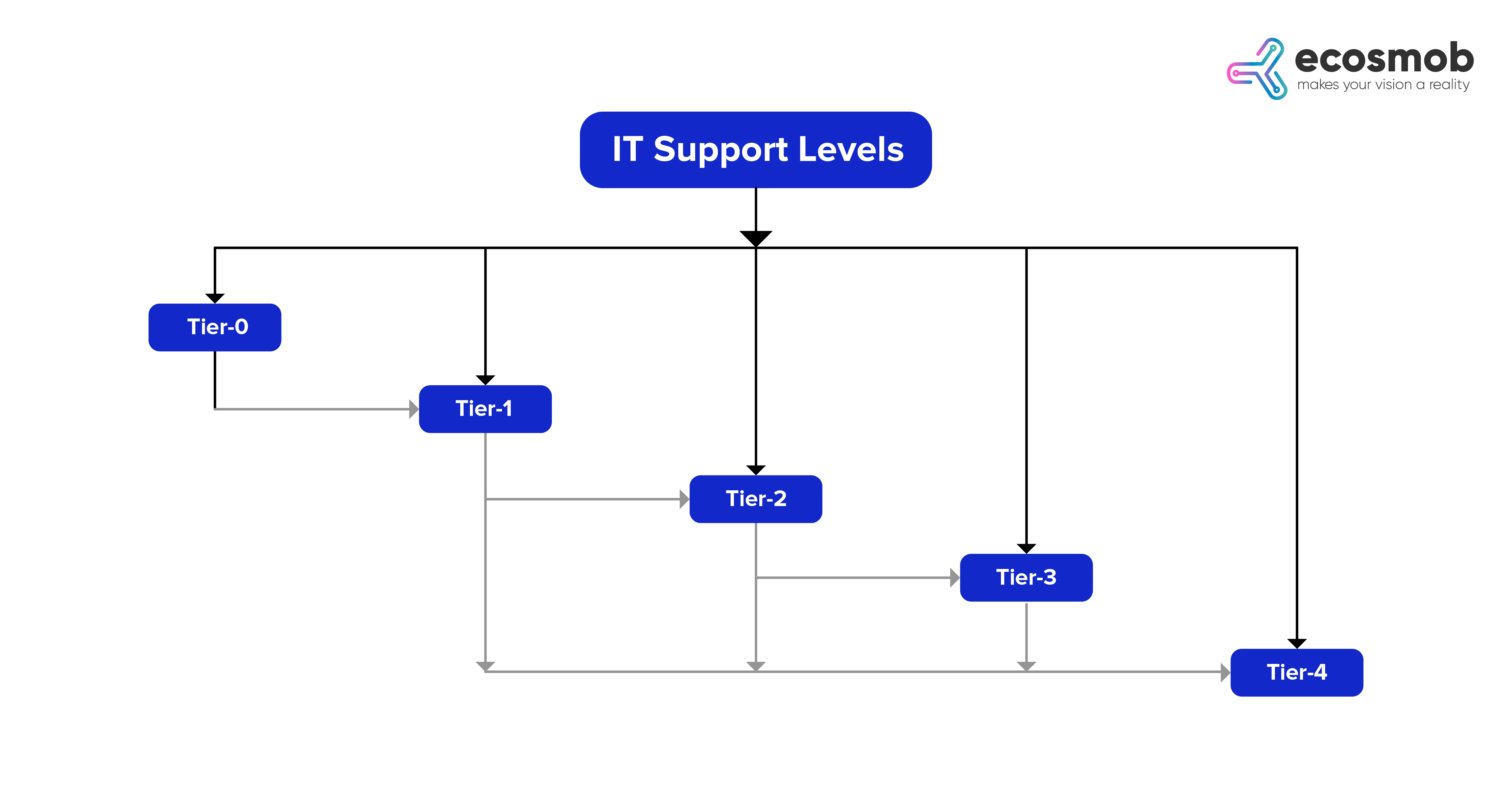 Difference Between Tier1 vs. Tier 2 vs. Tier 3 Support
Difference Between Tier1 vs. Tier 2 vs. Tier 3 Support
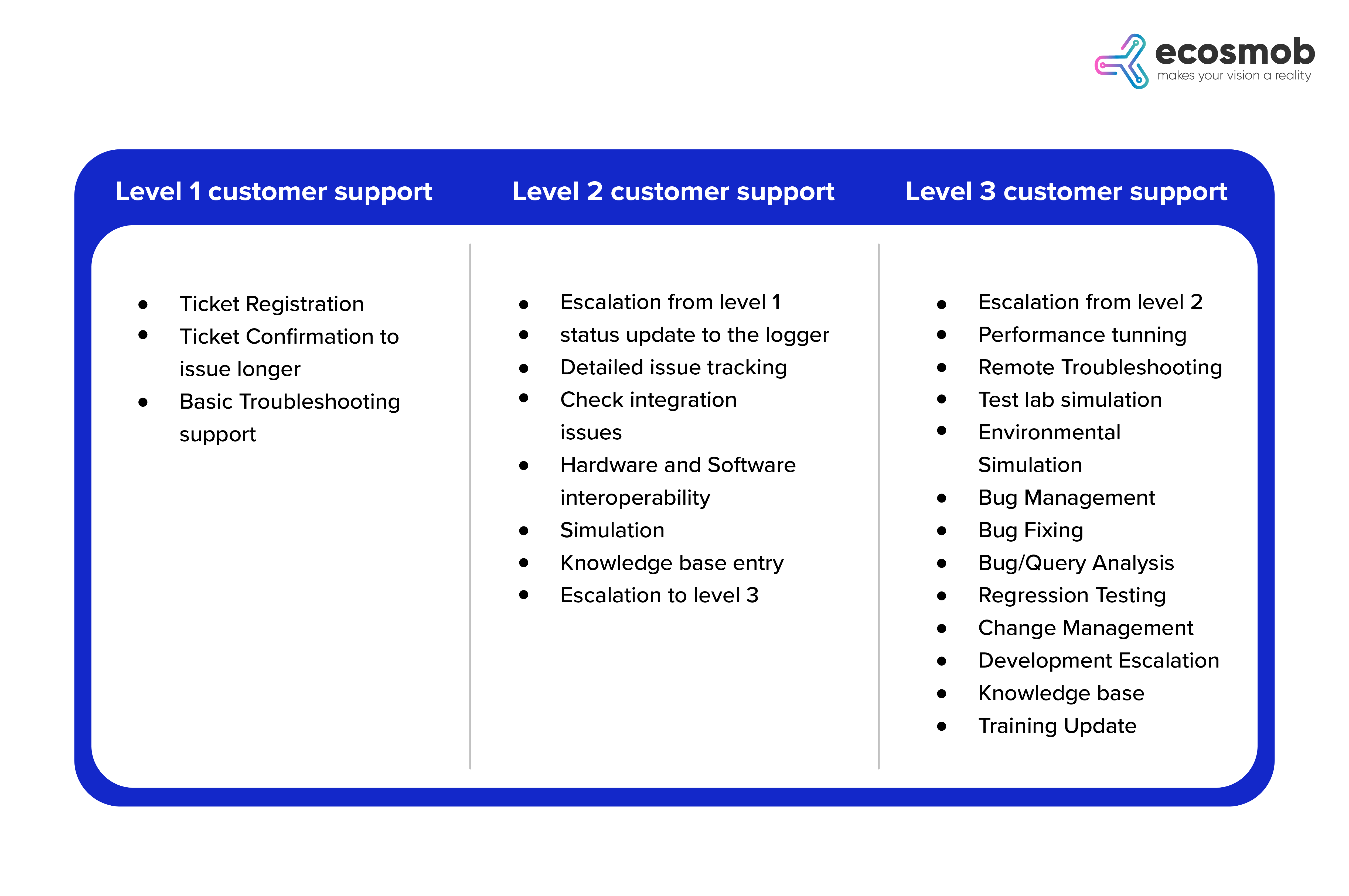 Tier 1, Tier 2, and Tier 3 support levels differ in complexity, expertise, and responsibilities in the IT support hierarchy. Here’s a comparison:
Tier 1, Tier 2, and Tier 3 support levels differ in complexity, expertise, and responsibilities in the IT support hierarchy. Here’s a comparison:
| Aspect | Tier 1 Support (L1) | Tier 2 Support (L2) | Tier 3 Support (L3) |
| Role | First point of contact for basic issues. | Resolves escalated, more complex issues. | Handles critical, highly complex technical problems. |
| Responsibilities | – Password resets
– Basic troubleshooting – Routing unresolved issues. |
– Advanced troubleshooting
– Resolving technical issues – Documenting solutions. |
– Root cause analysis
– Bug fixes – Designing system-level solutions. |
| Expertise Required | Basic technical knowledge and strong communication skills. | Greater experience with systems, products, and tools. | Specialized expertise in software, hardware, or architecture. |
| Tools Access | Limited tools and predefined scripts for problem resolution. | Access to company tools, in-depth knowledge bases, and documentation. | Full access to backend systems, code, and design architecture. |
| Escalation | Routes unresolved issues to Tier 2. | Escalates unresolved complex issues to Tier 3. | Rarely escalates, resolves most problems at this level. |
| Examples | Resetting passwords, account queries, or troubleshooting simple hardware/software issues. | Debugging applications, resolving server errors, or troubleshooting network connectivity. | Resolving system crashes, fixing bugs, or addressing infrastructure-level problems. |
Why Do Businesses Need Tiered IT Support?
Tiered IT support is a structured approach to managing technical issues efficiently. It divides support into multiple levels (Tier 1, Tier 2, and Tier 3). Each tier specializes in specific types of queries, ensuring that customer concerns are resolved effectively while optimizing resources.
-
Streamlined Problem Resolution
-
-
- Each tier handles specific issues based on complexity, ensuring faster resolution times.
- Simple queries are addressed at Tier 1, while more complex problems are escalated to higher levels.
-
-
Cost-Effective Resource Allocation
-
-
- Basic issues are managed by lower-tier teams, reducing costs associated with highly skilled engineers.
- Advanced support is only utilized when necessary.
-
-
Expertise at Every Level
-
-
- Tier 1 provides general assistance and basic troubleshooting.
- Tier 2 handles more technical issues with specialized knowledge.
- Tier 3 resolves the most complex problems with in-depth expertise and administrator-level access.
-
-
Improved Customer Experience
-
-
- Faster responses and effective resolutions lead to higher customer satisfaction.
- Tiered support ensures customers are directed to the right expert without unnecessary delays.
-
-
Proactive Maintenance and Escalation
-
- Higher tiers identify recurring issues and implement long-term fixes.
- Escalation processes ensure critical problems are addressed by the appropriate team.
Adopting tiered IT support enhances operational efficiency and builds trust by providing reliable and effective solutions to customers.
Partnering with Ecosmob for Enhanced IT Support
While these are the recognized levels of support, your needs may vary depending on the service and product you provide, the number of clients, and the size of your business. So, contact L1, L2, and L3 customer support engineers according to your requirements. Combining Level 1 and Level 2 technicians to fix problems before upgrading them to Level 3 IT engineer is possible. Also, shifting employees between Level 1 and 2 roles helps with experiences and training and increases employee retention and satisfaction.
However, at Ecosmob, we provide a streamlined support escalation path for superior customer experience and offer a simplified support escalation path for efficient resolution and customer experience. With us, you can focus on developing and improving your products while we handle all technical support queries. Contact us today to learn more about our offerings and to hire L1/L2/L3 IT support engineers.
Get unlimited solutions via L1, L2, and L3 technical support for IT companies
FAQs
What is the difference between Tier 2 and Tier 3 support engineer?
Tier 2 handles complex issues escalated from Tier 1, focusing on advanced troubleshooting and technical analysis. Tier 3 engineer, on the other hand, deals with critical problems, bug fixes, and infrastructure-level solutions requiring specialized expertise.
How does a tiered IT support structure benefit business operations?
A tiered structure ensures efficient issue resolution by routing problems to the right level of expertise, reducing downtime, improving customer satisfaction, and optimizing resource allocation.
What responsibilities do Tier 2 support technicians have?
Tier 2 technicians troubleshoot escalated issues, analyze system incidents, maintain documentation, and support tier 1 engineer by providing training and in-depth technical knowledge.
Can Level 1 and Level 2 support roles be combined?
Yes, combining L1 and L2 roles can streamline support processes for simpler issues, reduce operational costs, and enhance problem-solving efficiency.
When should I escalate an issue to Tier 3 support engineer?
Escalate to Tier 3 engineer when the problem requires deep technical expertise, such as resolving critical system failures, addressing infrastructure-level issues, or performing root cause analysis.


